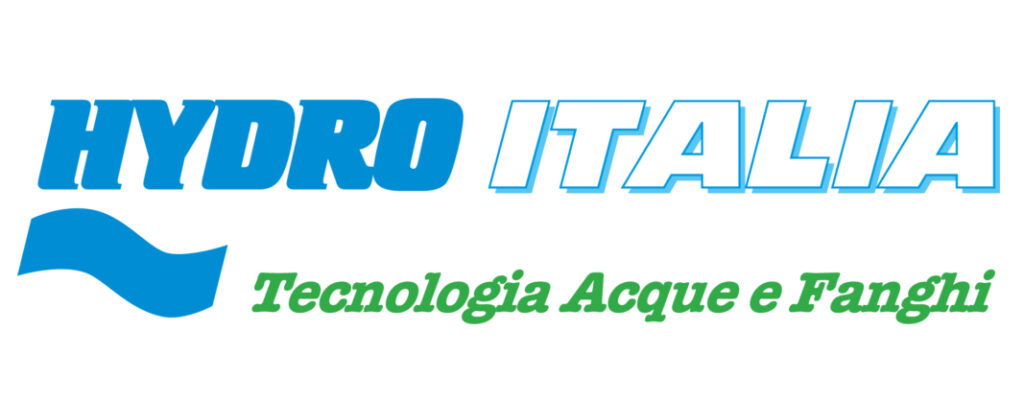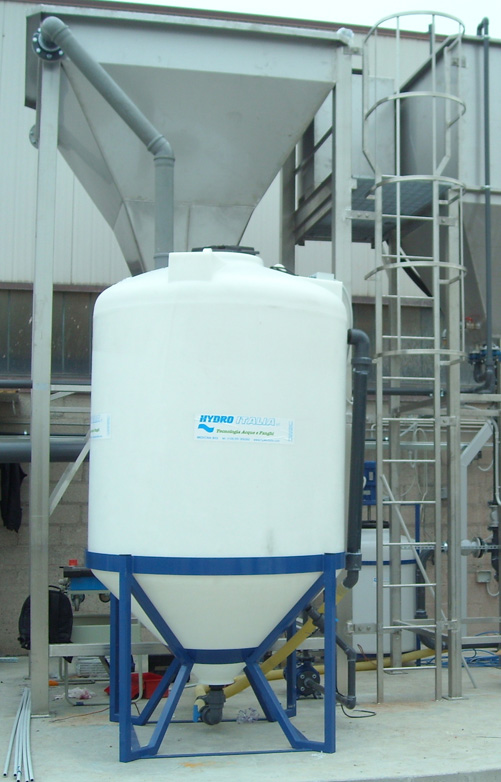Normally physical-chemical systems are used for industrial wastewater treatment
Industrial waste purification with physical-chemical treatment
The continuous physical-chemical treatment consists in purifying different types of effluents, at a constant flow rate for optimal purification efficiency. A typical purification cycle may include, but is not limited to, the following phases:
STORAGE AND REDELIVERY OF DILUTED WASTE FROM CONTINUOUS WASHING
The washings coming from the various processes flow into a collection tank. From here both the water and industrial wastewater are taken up by an electric pump and sent to the first mixing reactor
STORAGE AND REDELIVERY OF EXHAUSTED CONCENTRATES Discontinuous wastewater coming from occasional drains of concentrated baths, from demineralization eluates or from specific upstream pre-treatments flow into a collection tank. From the tank the water is taken and sent, only in the presence of the primary flow of the washing, to the first mixing reactor.
PH AUTOMATIC CONTROL/COAGULATION PHYSICAL-CHEMICAL TREATMENT
The water flows into the first mixing reactor to better homogenize the various types of wastewater and added reagents, such as e.g. coagulants, products for pH control, etc.
PHYSICAL-CHEMICAL TREATMENT OF SLUDGE THICKENING
The sewage from the previous treatment is conveyed to a reactor with an electro-mixer to keep the solution homogeneous by favoring the aggregation of sludge flakes, thanks to the dosage of specific flocculating products.
PHYSICAL-CHEMICAL TREATMENT OF SLUDGE SEDIMENTATION
From the reactor the wastewater will flow into the sludge sedimentation section. The clarified water, through a weir, flows to the redelivery tank while the separated sludge collects at the bottom of the decanter.
CLARIFIED EXHAUSTS RECOVERY
From the sedimentation treatment the clarified water flows falling into a tank, from which it is taken to be sent to the subsequent post-treatment phases to complete the purification process. Some possible options are listed below:
– Filtration of water on quartz
The filtration station is necessary to eliminate from treated water the suspended bodies; In this sense, mixtures with different granulometry of specific filtering products are used.
– Adsorption of water on active carbons
At the filtration outlet, the water flows into the adsorption section. This section is useful for breaking down traces of residual organic substances such as mineral oils, surfactants and solvents and uses different types of activated carbon with a highly specific surface.
– Ph automatic final correction
At the end of the post-treatment section, the wastewater can flow into the reactor for final correction of the pH value. The pH corrector is dosed to adjust the pH to the correct value foreseen for the final discharge.
– Sludge thickness and treatment
The sludge accumulated in the lower hopper of the sedimentation tank is sent to the thickening section. From here the sludge is taken and sent to the dehydration section for a significant reduction in volume and consequent savings on disposal costs. The drained water will be sent back by gravity to the storage tank.






